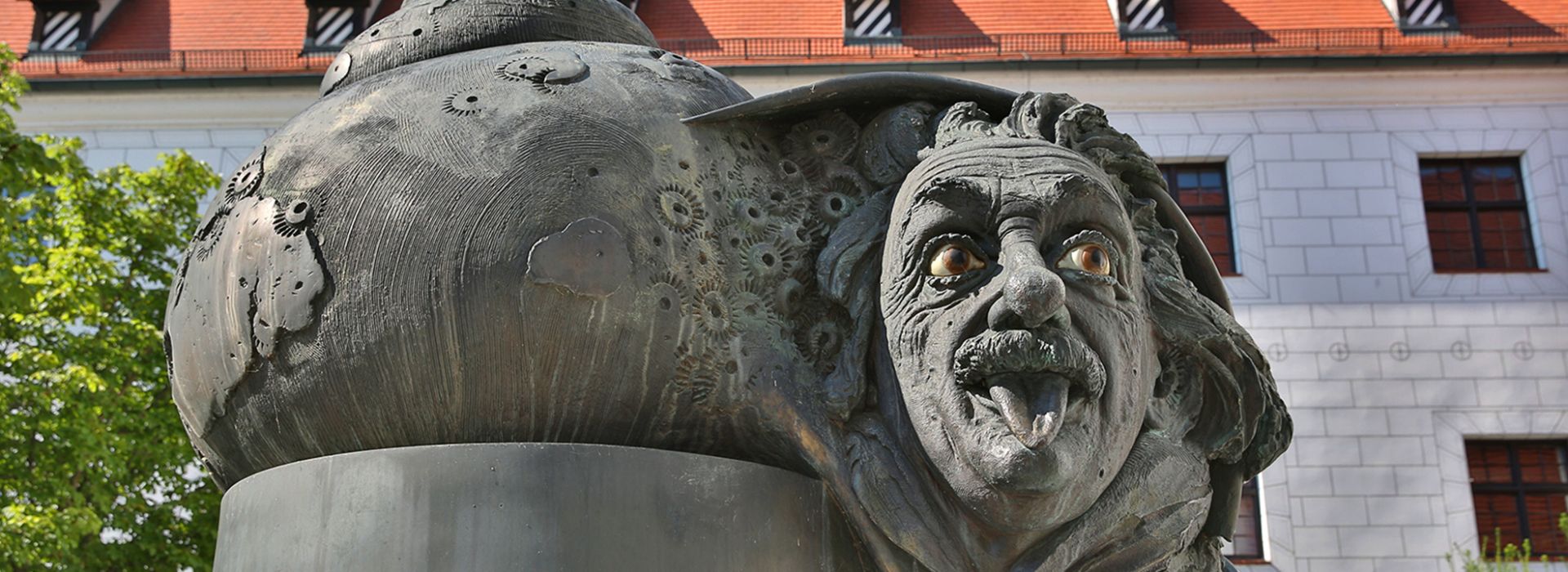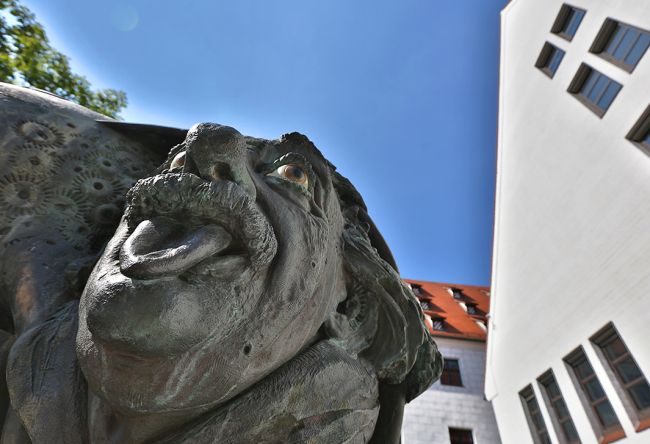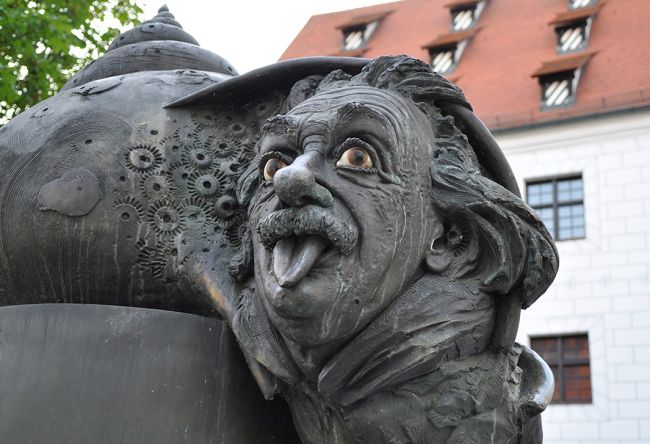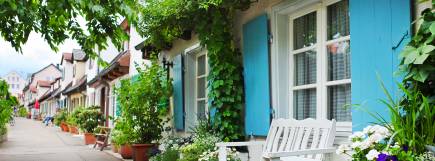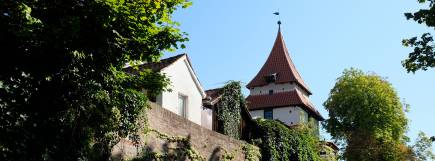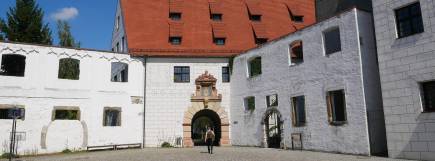But only a relative resident of Ulm? His native town boasts about this with a soft irony, while taking it seriously, too: A museum dedicated to Einstein's family was opened at the Weinhof in summer 2024, but the ›Einstein Fountain‹ has been around for some time. Here the world-famous physicist reveals his funny side.
The domicile of the Ulm Volkshochschule is a veritable feast for the eyes for those wanting to trace his life in pictures. We are talking about the ›EinsteinHaus‹, which was Ulm´s spiritual and democratic centre during the post-war decades. The gallery on the first floor showcases the most famous photographs of Albert Einstein.
Cast in bronze and plastically shaped, it can also be found in the ›Einstein Fountain‹ on the ›Zeughaus‹ site. It was created in 1984 by Jürgen Goertz, who is the artist residing in Angelbachtal.
Here, Albert Einstein sticks out his tongue at the fountain visitors, admirers, selfie hunters and collectors of picture souvenirs. As if he wanted to mock the cult that sometimes surrounds him. Of course the residents of Ulm are still proud of the connection between their city and the world-famous genius, even though it is not always a very happy one.
On 14th March 1879, Einstein was born in Ulm and on 21st June 1880, his father Herrmann Einstein registered the family in Munich. The inventor of the theory of relativity who died on 18th April 1955 in Princeton (USA), had spent just 15 months of his 76-year life in Ulm. But no matter.
Given that part of his widely scattered kinship continued to live in Ulm, his ties to the imperial city were never broken. More recent investigations into his family history revealed that Einstein, a Jew, acted as a guarantor to help a number of persecuted people migrate to the USA during the Nazi era.
Understandably, his relationship with Ulm remained tense in the aftermath of 1945. The city has long faced this uncomfortable part of its history – without relativisation. Meeting Einstein today would provide another exciting chapter.
Address
Einstein-Brunnen
Am Zeughaus
89073 Ulm
